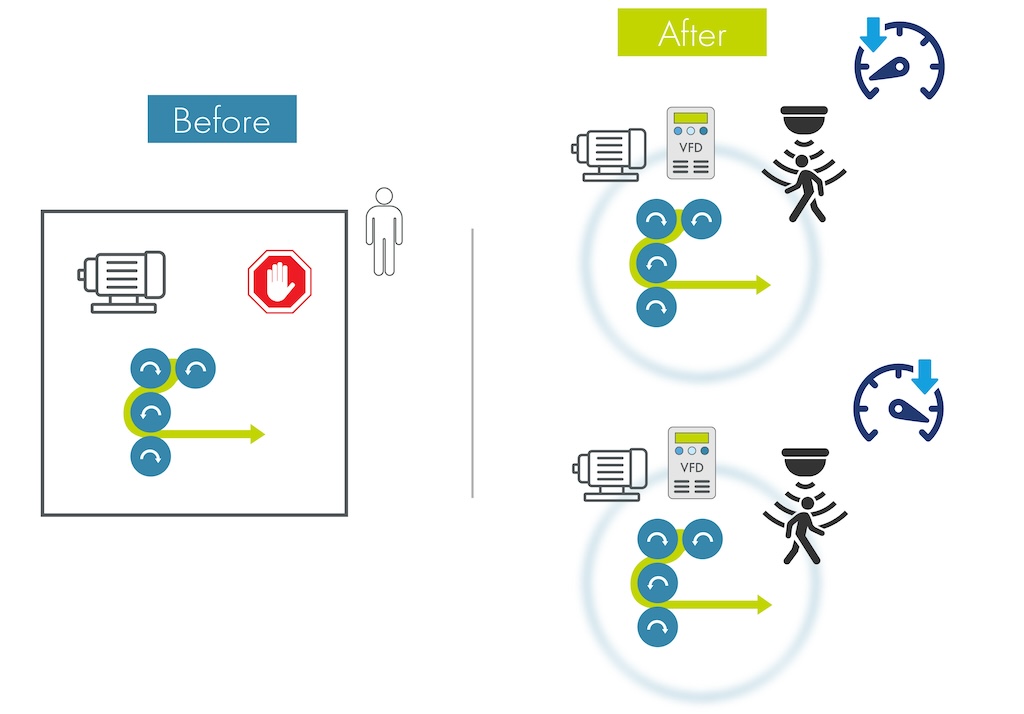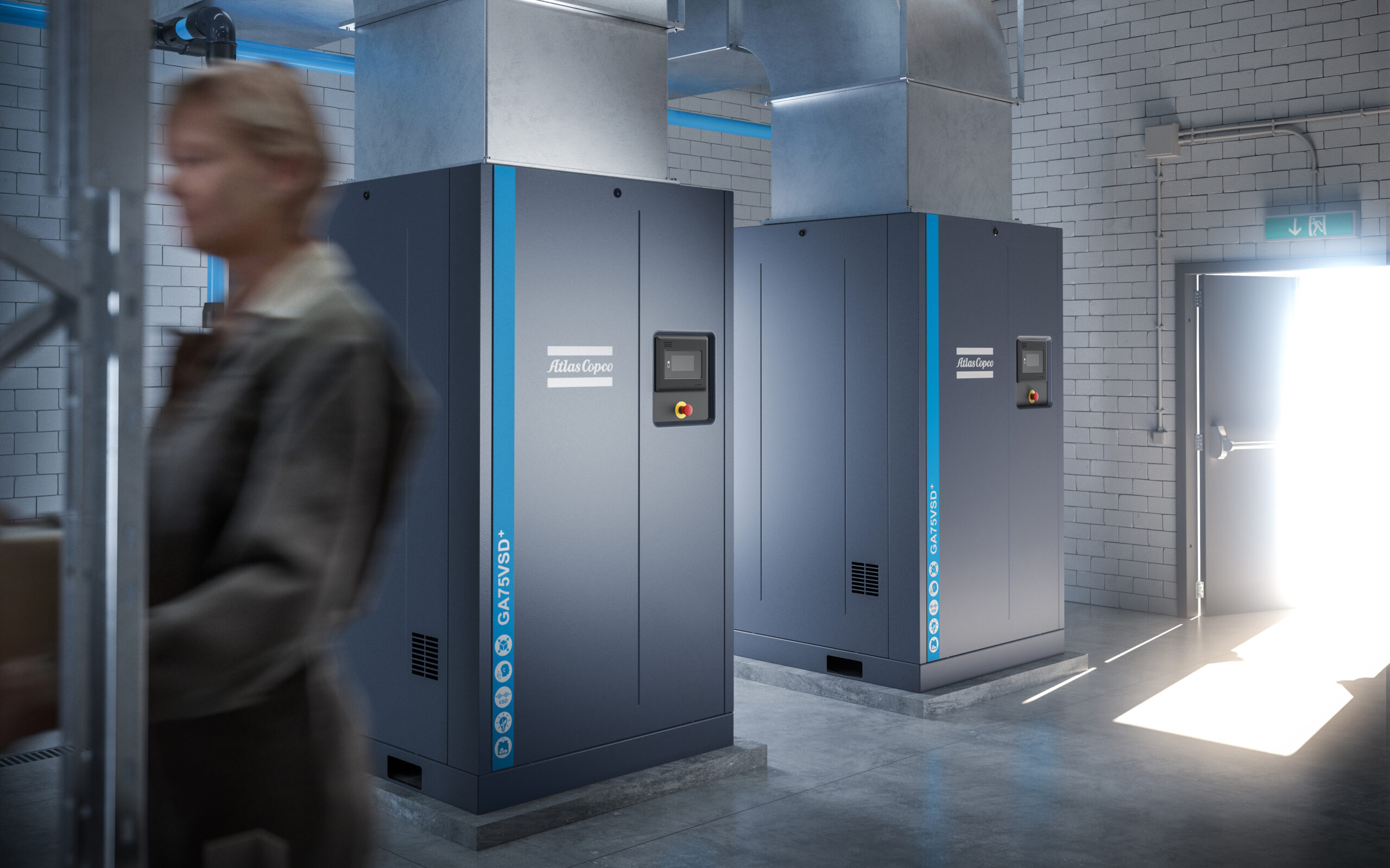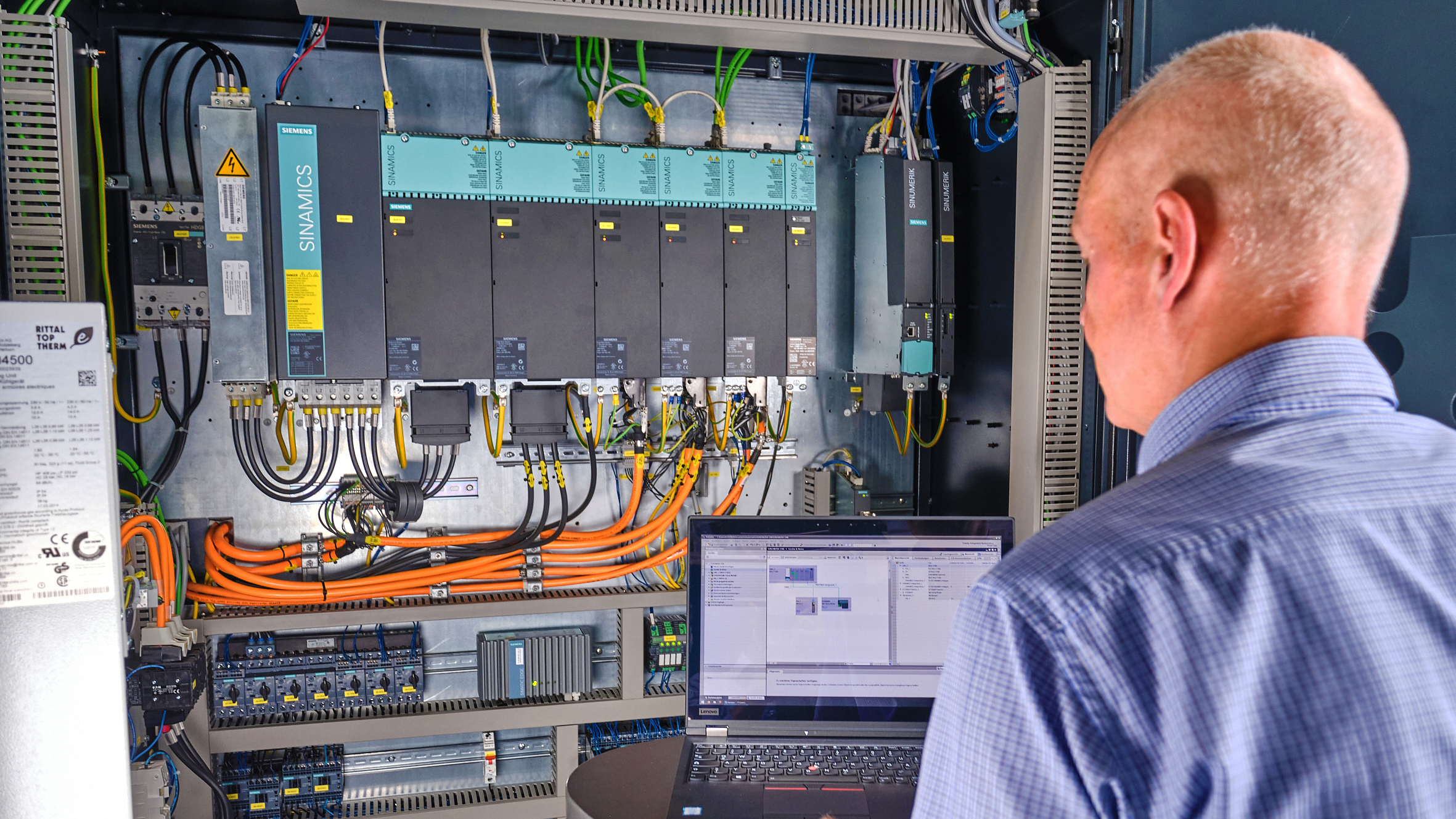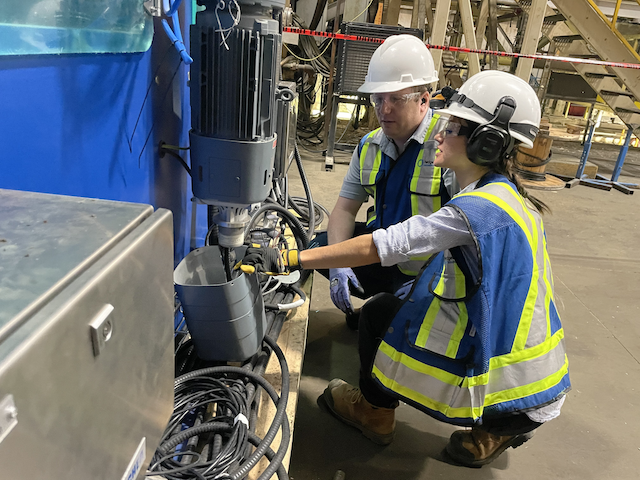In an October 30, 2023, webcast “Motors and drives: How to optimize industrial energy use,” Michael Lyda from Advanced Energy specifies and analyzes how to optimize energy use for motors and drives and other factors to consider.
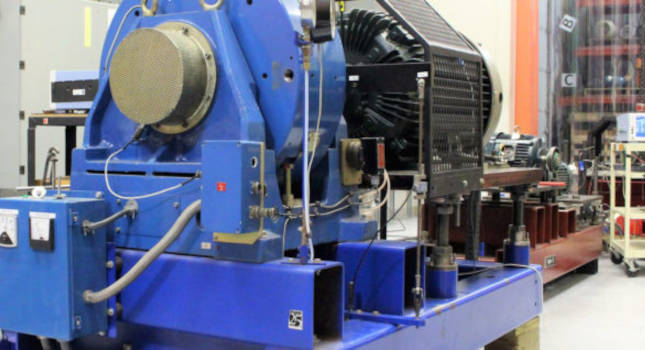
Motor and drive insights
- Motors and drives can run for a very long time and keep a plant efficient, but it needs the right equipment and knowledge behind it.
- Understanding the codes and standards behind motors and drives can help engineers enormously in maintaining their equipment.
Over their operating lives, most ac induction motors exhibit common problems, from transients to voltage imbalances and single phasing.
Therefore, being familiar with general troubleshooting techniques is important. To start, it’s vital to understand the operating parameters and forces acting against a motor; to perform tests and make observations based on those parameters; and to remove system components to isolate a problem.
Proper size and power source connection must be verified. Regular measurement procedures, starting with nominal voltage, current and frequency can be the starting point for long-running optimal motor and drive operation.
In an October 30, 2023, webcast, Michael Lyda from Advanced Energy analyzed how to optimize energy use for motors and drives and other factors to consider.
The transcript of this presentation has been provided with minor edits and adaptions for clarity.
Michael Lyda: Why are electric motors important? We estimate here motor-driven systems account for approximately 50% of all the electricity generated in the world. Likely we have a lot of facilities folks on the call today, so motor-driven loads like compressors, pumps, fans, things like that, account for a lot of the energy usage and also the energy bills at the facility. So if you have an effective motor management system, a database, taking surveys of the motors regularly and then also being able to take advantage of energy-saving opportunities by adding variable frequency drives (VFDs) can certainly help you reduce that energy usage.
Or maybe if you don’t reduce energy usage, you get more output for the same energy usage and that can save you a lot of money and get you basically more widgets out the door for the same energy is going to improve your efficiency in the plant.
The other thing that we want to look at today and think something that interests us here at Advanced Energy is what motors are available in the market and as a plant, or as plant personnel, being able to understand what motors may be available in the market and then also what regulations cover those products. That’s going to be able to help you long-term with making your purchasing decisions and then pursuing motors that may run longer or be more reliable and then also run at a higher level of efficiency over their life.
Our content today is going to be mainly in two pieces. We have the electric motor regulations piece. We’ll do a brief history of electric motor regulations, primarily focused on the United States. We do have a slide on the European Union. If you have questions after the presentation on the region that you’re in, just give me a call or shoot me an email. We don’t know all the regions, but certainly we could help navigate you to the right place if you are looking for the regulations that cover your specific country or region.
We’ll go over some recent changes on the regulations. And then the meat of the material today is going to be around VFDs drives. So we’ll cover basics, we’ll look at applications, we’ll do energy-savings potential, and we have a nice example that we’ll review. And then also we’ll talk about application issues when you add VFDs drives, as well.
Focusing on the United States for now, the governing body for appliance standards in the United States is the Department of Energy, so US DOE. US DOE passed rules back in the early to mid-1990s. Electric motors are an appliance. They consider motors an appliance.
I guess a good place to start is what is an electric motor? An electric motor is a device that converts electrical input power into mechanical output power. These were not regulated products, and when I say regulated, I mean regulated to efficiency levels. These are not regulated products. Back in the ’60s, ’70s, ’80s, early to mid ’90s, that’s when regulation started going into effect and motors started having efficiency requirements. Motor manufacturers didn’t really change. They were selling products into the United States. The thing that changed is they now had to do efficiency testing and meet the compliance rules passed by the Department of Energy through the Energy Policy Act.
The most basic rule for a motor manufacturer when they’re needing to get in compliance in the United States, they may sell 10, 15 different basic models of motor. Maybe they sell 200 basic models of motor. We have clients who sell over 1,000 different basic models. A basic model is a motor, it’s a horsepower rating, a speed, a voltage. So if you had to test all of those basic models in order to be compliant, it could be thousands and thousands of motor tests. So what the Department of Energy allowed back then, and they still allow today, is pick five of those basic models and then test five samples of each of those models.
Then there are requirements about what the average efficiency of those five tests needs to be. And then the motor manufacturer will have a model which is, well, I’m using model a lot, but a model which is called an alternative efficiency determination method (AEDM).
It’s a statistical model that represents the population of their electric motors. So the requirements about which five models that you pick to validate your AEDM, and then they will be across the size range and the highest volume sellers, different frame types, on frame transitions, things like that. Once the motor manufacturer has tested those five, then they can apply for compliance in the United States. So that’s kind of the history of things.
Over the years, there have been new motors added to the regulations. Efficiency levels have crept up. At the beginning we were at IE1 level of efficiency. That’s a European term. And then we went to IE2, or Energy Efficient was the US term. Now we’re at IE3 level of efficiency, or in the United States it’s called NEMA Premium. NEMA is a trade association that represents the electrical equipment manufacturers, in this case, electric motor manufacturers.
So on down through a couple of the changes that are listed on the slides, you had the small motor rule, started in 2010 and went into effect 2015. That added one quarter horsepower up to three horsepower small motors, two-digit frame size, only open drip proof motors, not fan cooled. Then you had an expanded expansion of scope. So more products were added back in 2014 into effect of 2016, including brake motors, vertical hollow shaft and a few others. And then we had the newest rule that came out back in 2022, new test procedure that went into effect April of 2023. This is the summary of the newest rule that you would need to be concerned about. Total Enclosed Air Over Motors, TEAO motors were added during that time to the regulations.
Induction motors previously were covered up to 500 HP. Now between 500 and 750 are included. Previously not covered were synchronous motors. Synchronous motors are motors that don’t operate on the principle of induction, so they don’t have a slip in order to get to their target torque. The thing is, synchronous motors, a few types, switch reluctance motors, permanent magnet motors, synchronous reluctance motors are a few types of synchronous motors, those motors haven’t been regulated in the past. And one of the reasons why is those motors are required to have some type of controller in order to operate.
So now, the Department of Energy has taken a new turn and is adding synchronous motors and motors with a controller. The test standards that have been applicable for many, many years that just cover, like IAAA112, IAAA114, which focus on just induction motors aren’t necessarily applicable to things like synchronous motors.
There’s some new IEC test standards that apply for synchronous motors, IEC 61800-9-2 is one of the standards. And then also for the next category, inverter-driven motors, this is motors that require an inverter to operate, as well, IEC 60434-2-3 is the test standard.
And then of course my favorite acronym from the United States Department of Energy, the SNEM category, small-non-small-electric-motor electric motors.
The reason why it has this real convoluted name is because, like I mentioned in the small motor rule, you had a third horsepower to three horsepower, three-phase motors and then single-phase motors, but only open drip proof frames. This new category of SNEMS is meant to cover any small electric motors that weren’t previously covered by the small motor rule. That’s why you get this crazy small-non-small-electric-motor electric motor name.
A few other categories I wanted to go over. Motor manufacturers who choose self-certification path and are utilizing an AEDM as I discussed, they must have a third-party nationally-recognized certification program certify the efficiency of their motors. Advanced Energy is one of those. If this is something that you need help with, feel free to reach out to review our website or reach out to me. Also, motors can be tested for enforcement at any voltage on the nameplate. So this is a big one. A lot of motor manufacturers do put “Rated from 208 to 230 and 460” on the nameplate, things like that.
If the motor is going to be enforcement tested to efficiency levels, the Department of Energy can now choose which voltage to do the enforcement testing at on the nameplate. We did receive just, I don’t know, a month, maybe four to six weeks ago, we received a recent notification from the Department of Energy regarding the test procedure updates. So DOE will delay enforcement activities for manufacturers making voluntary representations of those additional categories that were mentioned on the previous slide.
I’m just going to read these quickly. The size category motors between 500 and 750 HP, that enforcement commencement date, rather than being October 14th, 2023, now it will be 2024, so manufacturers will have up to 12 months to get those in order for their voluntary representation. And that voluntary representation means they’re placing efficiency levels on the nameplate and then also submitting data on those efficiencies to the Department of Energy. Air over electric motors, manufacturers will have a two-year delay, so October 14th, 2025. Inverter-only and synchronous motors, there will be a three-year delay, so October 14th, 2026. And then the last group, the expanded scope electric motors, also the same three-year delay to October 14th, 2026.
And then we did include a slide on European Union, European Commission updates for ecodesign requirements. And I will admit I’m less familiar with this then in the DOE realm, but if there are more deeper questions around these additions, feel free to reach out to me, shoot me an email or something after the presentation or sometime this week. One that definitely stands out is motors rated between 100 to 250 HP, or in kilowatts that’s 75 to 200 kw. New motors sold after July 2023 are required to be rated for IE4 efficiency level. That’s one band higher than IE3 or NEMA Premium as efficiency’s mostly referred to in the United States.
And then there were some others. These things were written in 2019, 2020 and then released in 2021. So the addition of 60 hertz motors, kW range extended up to 1,000 kW, voltage range extended up, VFDs or VFDs drives were added to the scope of the requirements. And then also single-phase motors are now required to meet IE2 level of efficiency from the EU.
